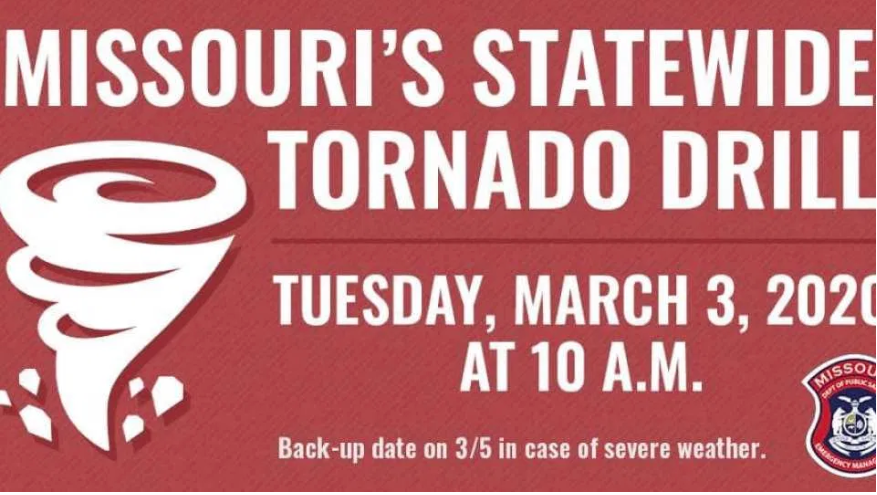 Northwest Missouri State University, along with the National Weather Service, the Missouri State Emergency Management Agency (SEMA) and local emergency management offices, will participate in the annual statewide tornado drill at 10 am, Tuesday, March 3, as part of Missouri Severe Weather Awareness Week, March 2 – 6.
Northwest Missouri State University, along with the National Weather Service, the Missouri State Emergency Management Agency (SEMA) and local emergency management offices, will participate in the annual statewide tornado drill at 10 am, Tuesday, March 3, as part of Missouri Severe Weather Awareness Week, March 2 – 6.
Northwest encourages campus-wide participation in the drill, and instructors should take a few minutes during classes to discuss preparedness and shelter locations in their buildings. The statewide drill is expected to last about 15 minutes.
When Northwest students and employees hear broadcast drill messages or outdoor warning sirens, they should practice seeking shelter. In areas where a tornado shelter does not exist, the safest shelter location is an interior room without windows in the lowest level of a building.
Severe weather procedures also are posted prominently in campus offices and throughout each building on the Northwest campus.
In case of actual inclement weather, the tornado drill will be rescheduled for 10 am, Thursday, March 5.
In addition to the statewide drill, Northwest tests its warning system at 11 am each Wednesday, weather permitting. Any deployment of the warning system outside of that time should be considered an actual emergency and immediate action should be taken.
Severe Weather Awareness Week is an annual effort by the National Weather Service, SEMA and Missouri’s local emergency managers to help Missourians prepare for dangerous tornadoes, severe storms, lightning and flooding.
Missouri’s stormaware.mo.gov/ website includes detailed videos showing how to take shelter in specific types of buildings, such as houses with and without basements, mobile homes and schools, as well as important information about tornado sirens and weather alert radios. The site also includes links to free severe weather texting services that can alert people across Missouri to upcoming severe weather.
Missouri and Northwest safety experts also offer these helpful tips for staying safe during severe weather.
• A tornado watch means conditions are favorable for severe weather to develop. Pay attention to changing weather and plan your activities with that in mind.
• A tornado warning means seek shelter immediately.
• Without a tornado shelter, an interior room without windows on the lowest floor of a building is the safest location to go.
• Do not seek shelter in a cafeteria, gymnasium or other large open room because the roof might collapse.
• Immediately leave a mobile home to seek shelter in a nearby building.
• Overpasses are not safe and can cause a dangerous wind tunnel effect.
• If you are driving, stop and take shelter in a nearby building.
• If you are driving in a rural area, seek shelter in a roadside ditch. Protect yourself from flying debris by covering your head with your arms, a coat or a blanket. Be prepared to move quickly in case the ditch fills with water
• Never drive into standing water. It can take less than six inches of fast-moving water to make a slow-moving car float. Once floating, a vehicle can overturn and sink.




Facebook Comments